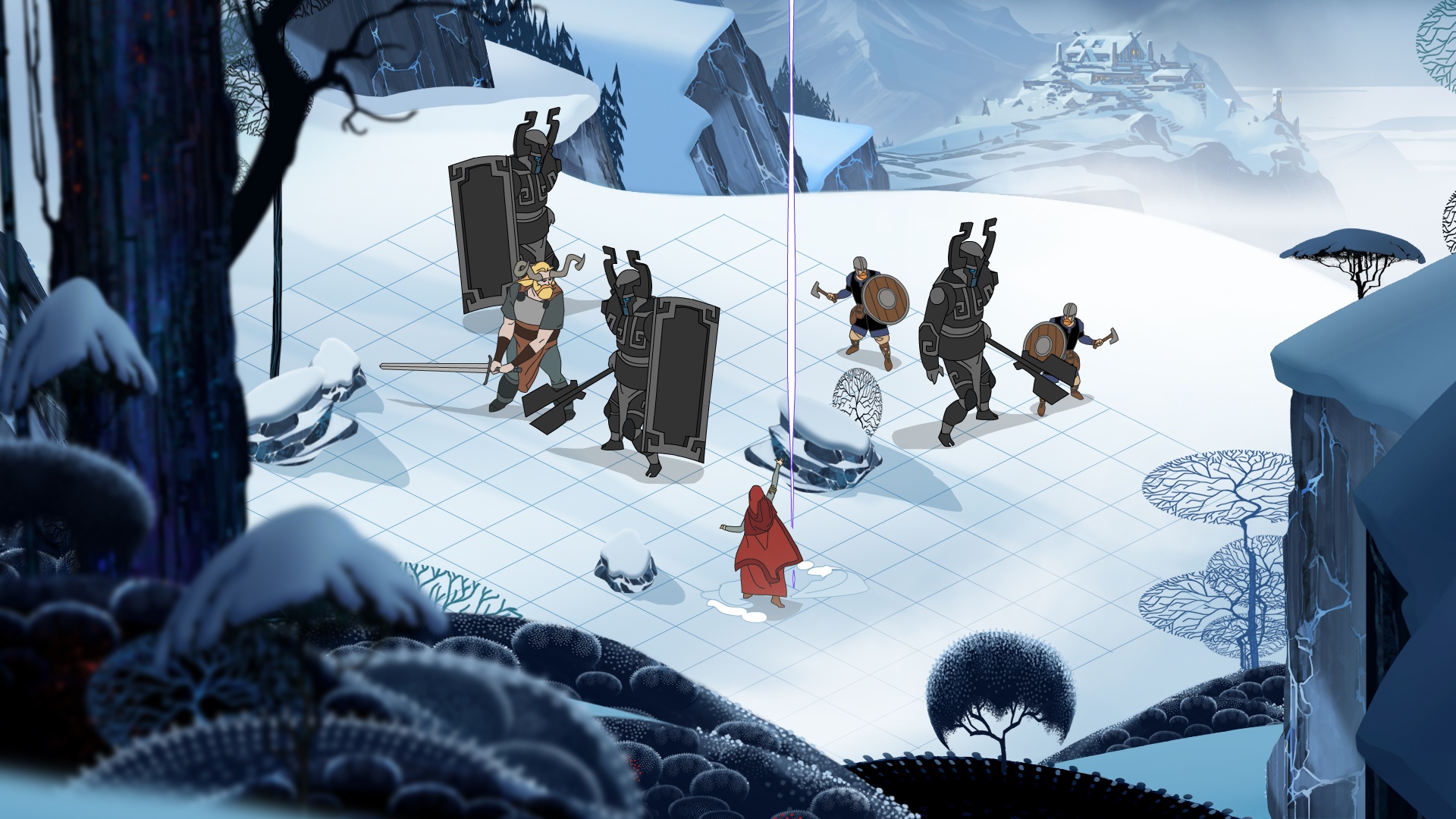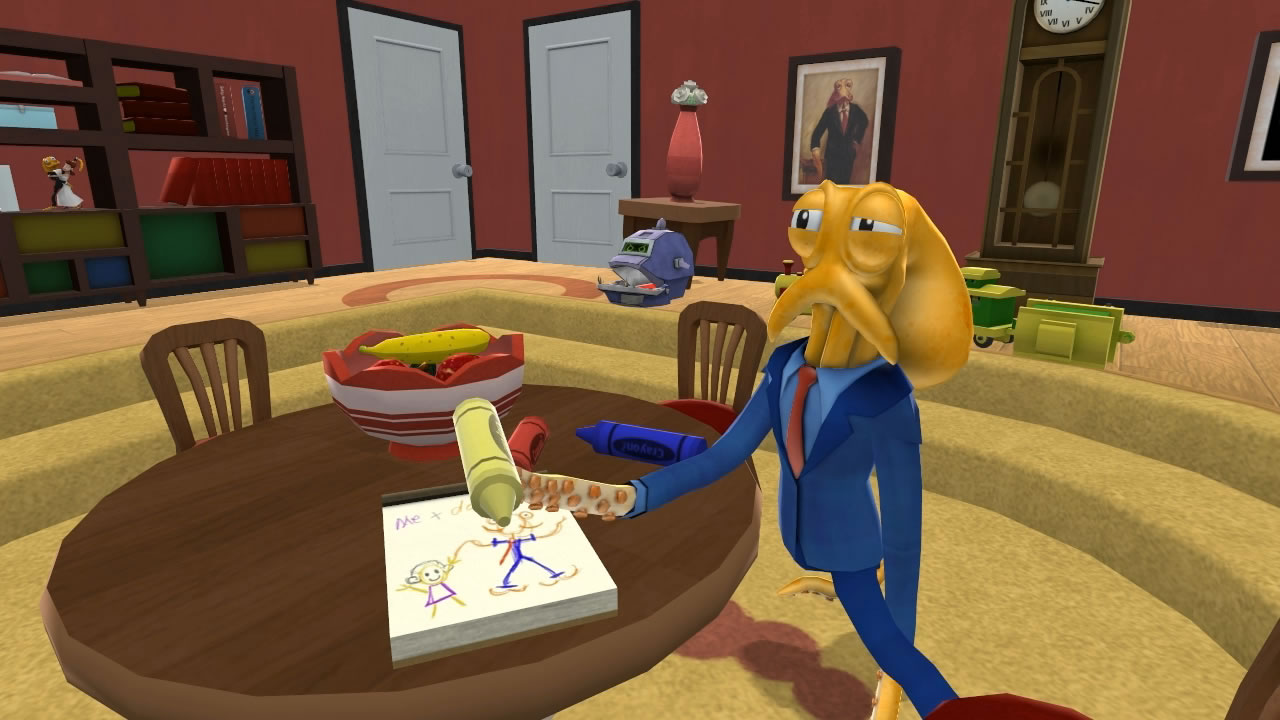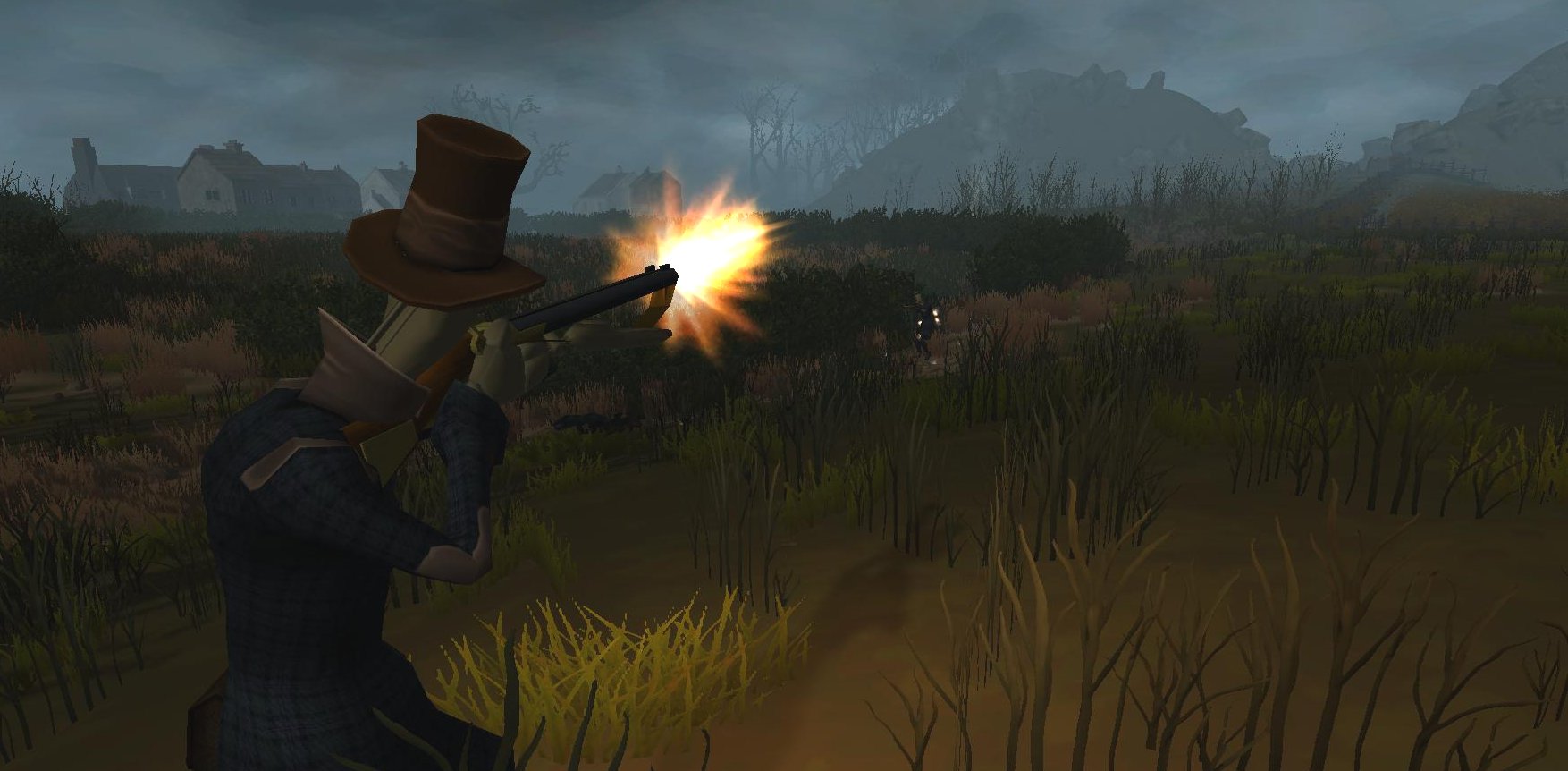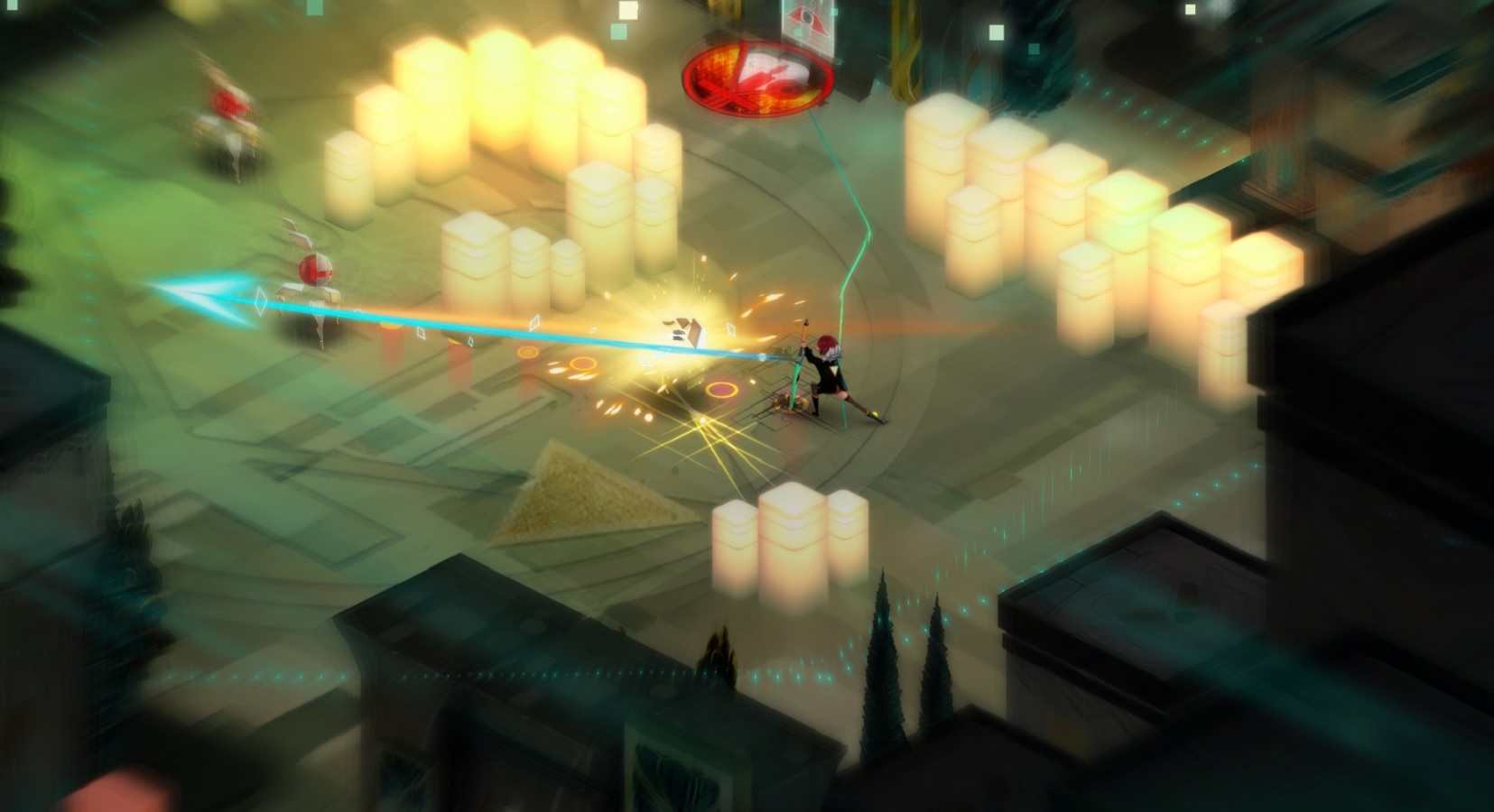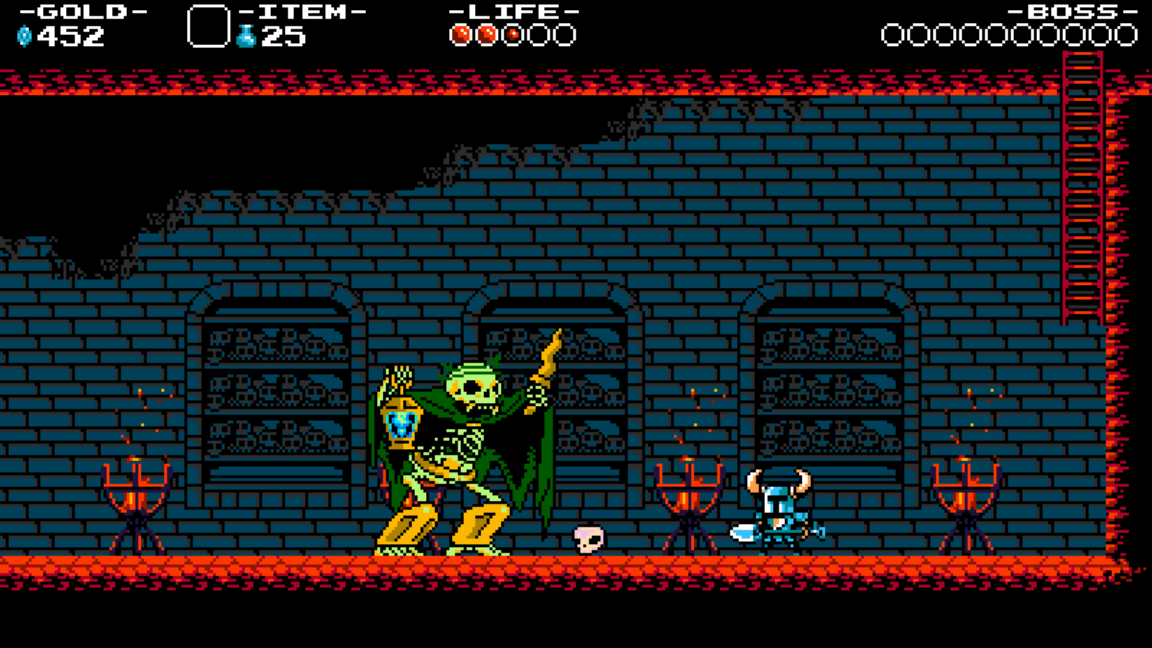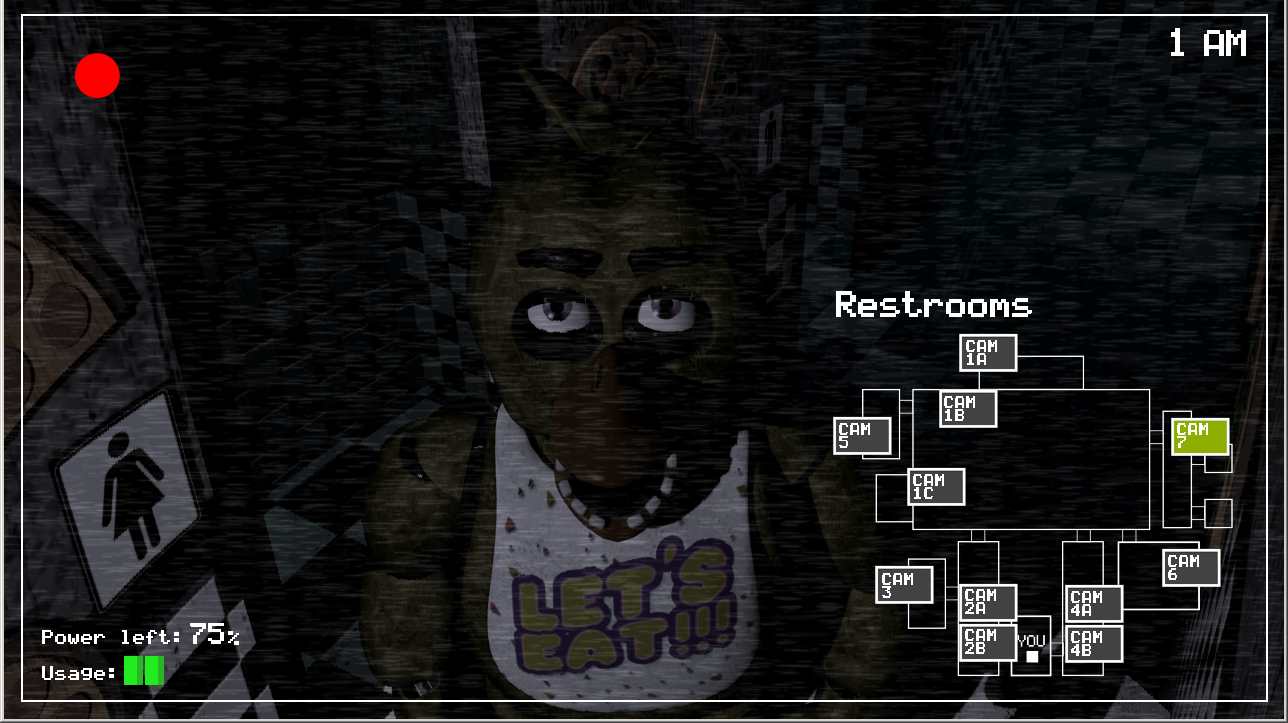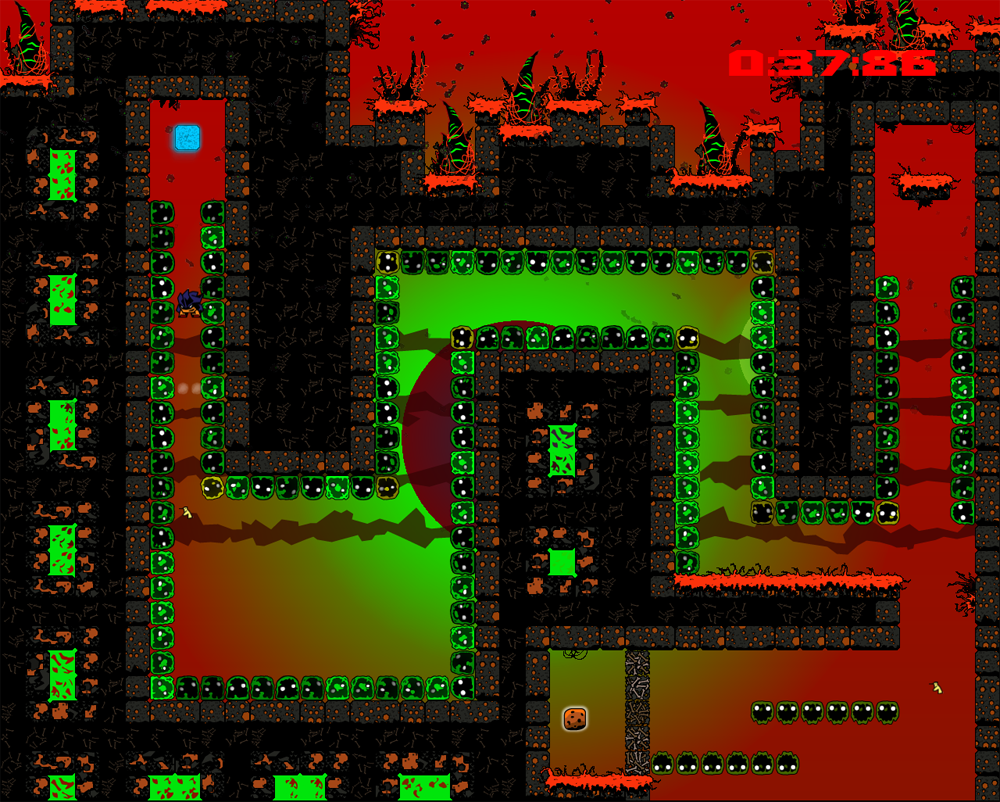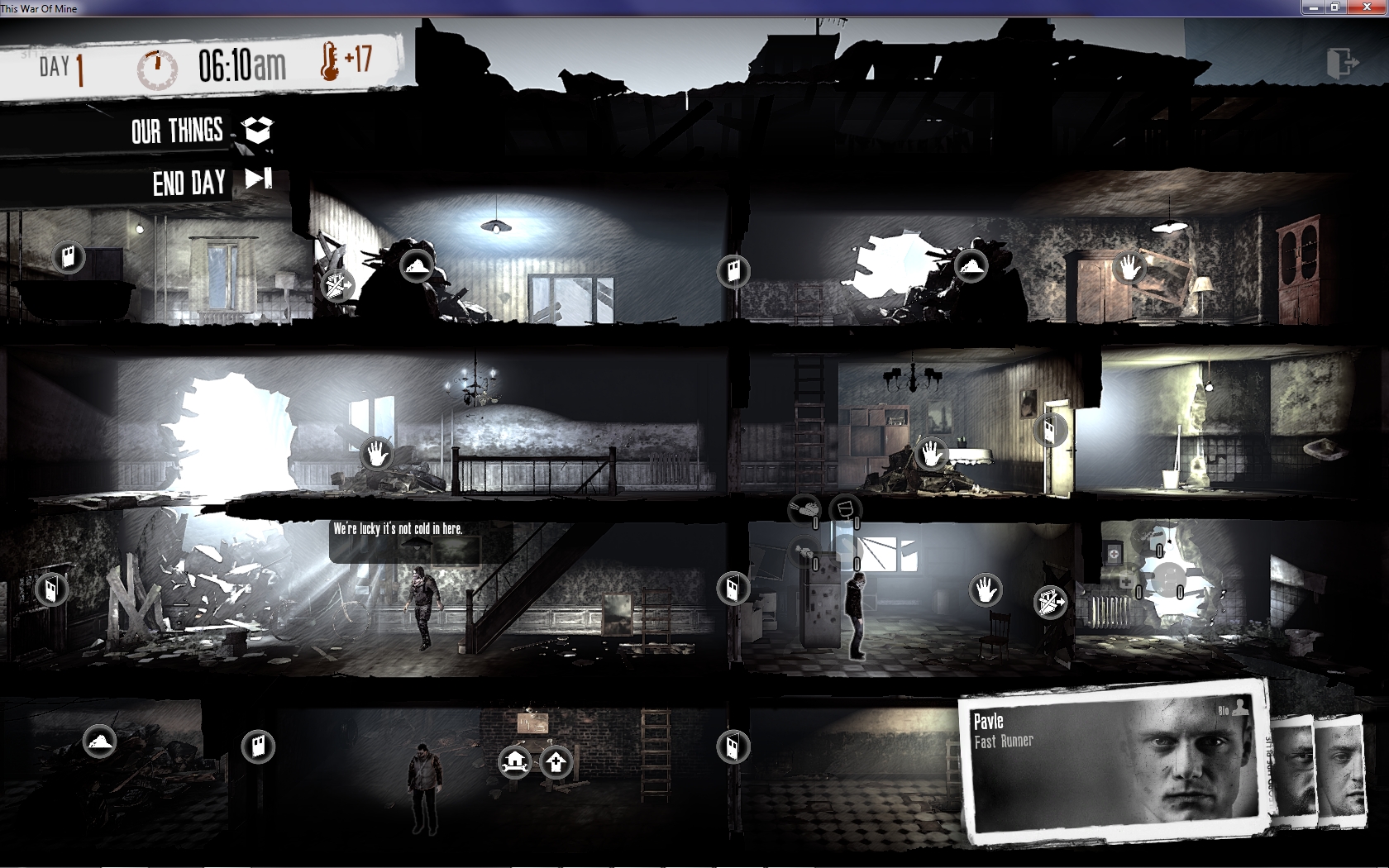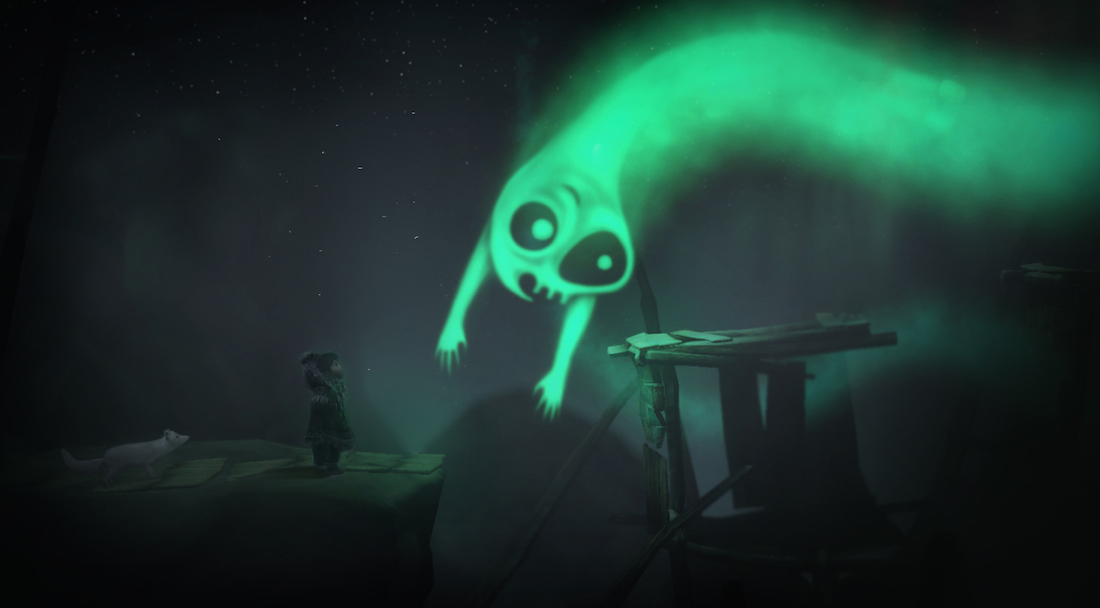Check out all of our Best of 2014 coverage here and Worst of 2014 coverage here.
Independent game development is the foremost frontier for exploring new ideas and concepts in a medium too often hampered by a need to retread the same ground. 2014 brought with it a surge in early access releases and the first big fruits of the crowdfunding craze, making the creation and release of these indie titles often as experimental or temperamental as their subject material.
We waded through the releases of this past year and selected the 15 sharpest, most creative, and most addictive indie games of 2014, listed below in order of release date. We only considered those games that had a full release. Playable alphas or early access builds for titles like The Forest, Rust, Superhot, or Broforce were often interesting, but they were not eligible. Feel free to let us know in the comments what you think about the games we did profile. And tell us what you would have added or taken away if this was your list instead of ours.
Nidhogg
Developer/Publisher: Messhof
Platforms: PlayStation 4, PlayStation Vita, PC, Mac
Release Date: January 13, 2014 (PC)
No one-on-one game better tested your twitch reflexes this year than Nidhogg, a fencing game where a single direct blow was fatal and blocking was a matter of pixel-precise timing. One player achieves victory by reaching the far end of their opponent’s side of the stage. Slicing down or otherwise killing your enemy gives you a few seconds to run forward before they respawn. Your reward for reaching the far end is the honor of being summarily devoured by a horrible-looking Norse dragon.
Each battle was a series of quick, fatal matches across multiple sparse screens, your character’s small but deadly fights playing out against backdrops with massive swinging chandeliers or cascading waterfalls. But Nidhogg was at its best when it stuck you and your opponent on the opposite end of a narrow corridor, where your excuses for failure were just as slight as your fencer’s breathing room. If you wanted simple but undeniable proof of your domination over any of your gamer friends or foes, you couldn’t find a more dispassionate judge of talent than Nidhogg.
Banner Saga
Developer: Stoic Games
Publisher: Versus Evil
Platforms: PC, Mac, iOS, Android
Release Date: January 14, 2014 (PC)
If every crowdfunded game came out as pristine as The Banner Saga, the economic model of the industry would effectively be split in two. This long caravan trek through the harsh mountains toughened players up until they could stand hand-in-calloused-hand with the towering Varl men they fought beside and against. You guided this ragtag ensemble in hope of finding a weakness in the Bellower, the leader of the war-hungry Dredge. The inescapable, tough decisions the player had to make on behalf of the caravan where often more brutal than the deliberate, turn-based battles that defined the Banner Saga’s bleak but beautiful campaign.
Above all of that is a triumph of aesthetic design on nearly every front. Journey composer Austin Wintory brought in a couple of famed Youtube singers in addition to the Dallas Wind Symphony to create a lush, often harsh score. The hand-drawn characters felt vibrantly alive, even as we struggled to bring down a heavy axe upon their heads. The Banner Saga had only a few rare moments where it wasn’t gorgeous to behold, drawing us into a desperate but hearty world that was painful to leave.
Octodad: Dadliest Catch
Developer/Publisher: Young Horses, Inc.
Platforms: PlayStation 4, PC, Mac, Linux
Release Date: January 30, 2014 (PC, Mac, Linux)
Never underestimate the appeal of a goofy dad. While the original Octodad had its enthusiastic supporters (myself included), the sequel proved that the tech demo of a clumsy Octopus faking his humanity by trying to perform everyday tasks could be made into a full game. Like the impossible-by-design runner QWOP, in Dadliest Catch you have to wrestle with purposefully obtuse controls to make a single movement. The later stages of the game focused too heavily on making a precise game out of these mechanics, but user-generated content has kept our love for the bumbling mollusk alive.
That’s possibly because that, beneath the awkward controls and made-for-Youtube schtick, there was a familial sense of desperation. You weren’t just an Octopus, you were a dad. You weren’t saving the world by flailing toward a nuclear launch facility, you were trying to grill a few burgers for your somehow human kids and wife. All while keeping your suction-cupped identity a secret, of course. The struggle of a father is not one we embark on often in games, probably because they all can’t be as caring as Octodad.
Threes
Developer/Publisher: Sirvo
Platforms: Xbox One, iOS, Android
Release Date: February 6, 2014 (iOS)
For all of the visual panache and mechanical flair of the other games on this list, Threes is one many of us have played the most. By far. The simple puzzler, where you slid tiles on a grid in order to add up to three or the multiples thereof, is on the shortlist for the addicting mobile hall of fame. If seeing mathematical equations everywhere wasn’t already a known phenomenon, Threes would be one of the few games since Tetris to have some players seeing its patterns and images everywhere outside the screen.
Threes managed to further simplify the satisfaction of math problem-solving found in sudoku and blend it into the sliding block puzzles we all seemed to have when we were kids. All it needed then was a leaderboard, and the world never stood a chance.
Goat Simulator
Developer: Coffee Stain Studios
Platforms: PC, Mac, Linux, iOS, Android
Release Date: April 1, 2014
Goat Simulator is a joke. It was released on April Fool’s Day. It has no connective design tissue beyond its few interactive elements. It’s a genuinely ugly game, and it’s not even that funny. But Coffee Stain Studios isn’t making a massive, faux-MMO expansion for a game that didn’t get set certain corners of the Internet on fire.
Like Octodad: Dadliest Catch (and another game further down our list), Goat Simulator exists largely thanks to the staggering popularity of Let’s Plays, gameplay videos recorded – and often spoken over and riffed on – by commentators. Youtube commentators snatched up early access codes for Goat Simulator and licked, kicked, and headbutted everything in sight. The economy of bemused hatred is often just as great as that of genuine interest, and Goat Simulator rams into the softest part of the brain that screams, “This is so stupid.” The profound dumbness of being a goat running around trying to sow chaos was never not apparent, in fact it was one of the chief factors that lead to people talking about and watching it as much as they did.
Sir, You Are Being Hunted
Developer: Big Robot
Platforms: PC, iOS, Linux
Release Date: May 1, 2014
Survival and wide open spaces aren’t often a good combination. Sir, You Are Being Hunted is well aware of this, but nevertheless dumps you on a massive island as a group of robotic Victorian gentleman track you down. As their prey, you must remain hidden in any way possible, crafting survival materials out of anything you can scrounge in nearby villages or landmarks. Combat is possible, but you will never be on equal footing with an immortal, armed machine. Your only hope is to escape the island entirely.
Aside from the perverse politeness of the title and your well-dressed predators, the chief joy of Sir, You Are Being Hunted is the procedurally-generated island. Every hunt is different, and each survival is uniquely earned. If you aren’t quick enough trying to reach one of the rune stones that will help you escape, the defense perimeter of Gentleman-bots makes your life even harder. And that’s without them launching the patrol-balloons or hound dogs. It’s an off-putting but charming take on the singularity where robots have evolved beyond humans but not so far beyond that they wouldn’t say no to a nice man-skin rug in front of the fireplace.
Transistor
Developer/Publisher: Supergiant Games
Platforms: PC, PlayStation 4, Mac, Linux
Release Date: May 20, 2014 (PC, PS4)
Supergiant Games is on a roll. Like Bastion before it, Transistor is a vibrant, enthralling little game of smart ideas and beautiful design. The electric-steampunk world of Cloudbank has a strong identity, making many players eager to hunt down any scrap of information they can about its inhabitants. The presence of your talking sword narrator proved oddly soothing as well.
But Transistor ultimately defined itself through rewarding combat. The isometric battles that defined the game were challenging in more than just basic difficulty. Fallen enemies dropped equippable attacks and powers known as Functions, and these could be maxed out in order to both increase their effects and unlock optional side plots. The discovery of these side narratives was one of Transistor’s best features and often eclipsed the main story.
And it almost goes without saying, but few scores released this year that can match Transistor’s self-described “Old-world Electronic Post-rock.”
Shovel Knight
Developer: Yacht Club Games
Platforms: Wii U, 3DS, PC, Mac, Linux
Release Date: June 26, 2014 (PC, 3DS, Wii U)
Throwbacks don’t usually get it as right as Shovel Knight did. What made Shovel Knight stand out among the constant pandering to gaming’s days long past was its measured affection for the gameplay design of that era. The dungeon-crawling platformer hit all of the nostalgic notes for the fans of the NES era, parallax screen scrolling and 8-bit inspired artwork. But it also countered for some of that age’s shortcomings, allowing for players to branch out beyond the NES-style, two-button control scheme when it suited them.
About the only thing Shovel Knight didn’t loosen up for today’s players was that old school difficulty. The challenge came strictly from timing and reflexes. From learning the patterns of your enemies, and getting into that rare groove of perfect platform jumps. Shovel Knight didn’t just look the part, it made you feel like you were back in the ’90s, getting through a few levels with a bowl of cereal in your lap.
Five Nights at Freddy’s
Developer: Scott Cawthorn
Platforms: PC, Android, iOS
Release Date: August 8, 2014 (PC)
Similar to Goat Simulator, Five Nights at Freddy’s was a game that made up for its flaws by developing a Let’s Play-based fandom that permeated throughout the Internet. In the case of this survival point-and-clicker, you play as a new night guardsman at a Chuck-E-Cheese’s-style family pizzeria. The animatronic characters move around at night and, due to a programming flaw, will fatally stuff you into a servo-filled mascot suit if they get into your office. In order to stop them or slow them down, you have to focus on their place within the restaurant through the security cameras and close your security doors should they get too close.
When you play by yourself – in the dark or not – Five Nights at Freddy’s isn’t that scary. The game is primarily a collection of jump scare payoffs to an audio drama of footsteps and slowed-down children’s laughter. The only time you tend to see someone frightened by the game are the Youtubers using it as an excuse to ham it up for the camera. But the forumites and creepy-pasta (or “Internet urban legend”) enthusiasts took it upon themselves to make the game creepy and developed around it a thriving community telling itself the ghost stories of Freddy Fazbear’s Pizza.
To its credit, the vague nature of Five Nights at Freddy’s lends itself to a lot of spooky speculation. For those that take the time to look for it, the background details and “secret” character at Freddy’s paint a much more disturbing picture than just some animatronics on the fritz. Dozens of intrepid forum-goers and Youtube channels are happily filling in the gaps of the game’s story with often meticulous research. It’s this community that has kept Five Nights at Freddy’s so prominently in the spotlight, even going so far as to support an early access sequel mere months after the first game launched.
The scariest thing about the Five Nights at Freddy’s community is all the porn about the duck animatronic, though.
Mountain
Developer: David O’Reilly
Platforms: PC, iOS, Android
Release Date: August 18, 2014 (PC)
Here is the latest challenge to what can be considered a “real game.” Like Gone Home and Dear Esther before it, Mountain isn’t too concerned with providing the player a set of graded challenges on their way to a defined goal. Described by its developer as a “relax-em-up” and “Mountain simulator”, you are playing as an immovable bit of the earth’s raised surface. Over the hours, the weather will change and things will land on you, but constant interaction with this game is limited.
Defining the experience of Mountain may well be going against the developer’s intentions, but there are hints that point to the game being part of an evolving genre known as “unfolding games.” These experiences gamify the idea of waiting, giving just enough of an action for the player to grow curious as to what happens next. And Mountain does reward your curiosity, with odd objects like toilets or massive deer getting lodged all over your surface hours after you booted the game up.
Whether you hate it or are intrigued by it, Mountain is yet another step in challenging the traditional design structure and purpose of video games. Not that your character cares what you think. It’s a mountain.
Roundabout
Developer/Publisher: No Goblin
Platforms: PC
Release Date: September 18, 2014
The days of FMV video are not the ones gamers scream the most for revival. But No Goblin effectively recreated that live-action cutscene cheese with Roundabout. But that’s in-between the bits where you pilot a constantly revolving limousine through obstacle courses like a schoolyard or suburban street. It’s a simple idea taken to its logical extreme, taking place within an open-world filled with collectibles and full upgrade tiers for your limo’s appearance and horn.
The live-action cutscenes are what Roundabout will be known for, with your silent limo driver protagonist looking back as a cast of idiots and cliches fill their backseat. It is certainly not to everyone’s taste in humor, but for those with a hankering for days deservedly gone by, you aren’t going to get a better wayback machine outside of a used Sega CD.
Fenix Rage
Developer: Green Lava Studios
Publisher: Reverb Triple XP
Platforms: PC
Release Date: September 24, 2014
The uber-difficult platformer itch just hasn’t been scratched enough. It felt like an eternity after we saw Super Meat Boy and Dustforce before Fenix Rage came along. But thankfully the little spiky spit-fire brought with him a slick mid-air dash and a host of levels desperate to watch him (and you) die. Piloting him through spiked walls, dissolving ice cubes, and all matter of death traps brought back that sweet feeling of tension in the knuckles almost immediately.
The tiny dude has the attitude of the Sega Genesis-era Sonic the Hedgehog and a (thankfully) faster-than-a-blink respawn time. Some levels came down a bit unfair in terms of layout, but 9,999 times out of 10,000, you could see the exact point you failed. It was usually right before you exploded. You’d have a hard time finding a stronger “one more try” experience this year.
The Vanishing of Ethan Carter
Developer/Publisher: The Astronauts
Platforms: PC
Release Date: September 26, 2014
Solving murder mysteries with paranormal abilities is a surprisingly common trope in adventure games. Hell, I helped make two such games in my last day job. What separates the Vanishing of Ethan Carter from the chaff is its sense of atmosphere. Beyond taking place in a beautiful locations, the story of detective Paul Prospero uncovering the secrets surrounding the disappearance of his titular fan is one of unnerving discovery. One told largely through found letters and supernatural sightings of horrible events.
The Vanishing of Ethan Carter is a slow burn. It gives off a small burst of momentum in the form of a particularly lengthy internal monologue whether you are solving puzzles at a crime scene or taking the sights. The ultimate narrative destination was not as important as the steps taken to get there. The Vanishing of Ethan Carter is a stand-out example of how video games can, in fact, survive at a more measured pace.
This War of Mine
Developer/Publisher: 11 Bit Studios
Platforms: PC, Mac, Linux
Release Date: November 14, 2014
Gamers are probably more used to playing around in war than just about anything else. We have played through almost every major, Euro-centric event of the last century, usually as a bullet-absorbing super-soldier on the most newspaper-worthy front lines. No surprise, then, that the somber, civilian side of wartime explored in This War of Mine came as a refreshing change to many players.
Your characters are under-skilled and often sick survivors in dire need of basic supplies. At night you can scavenge for as many core materials as you can carry. Your days are spent cooped up in a dilapidated housing structure, avoiding hostile sniper fire and building the things you need to live. It’s unpleasant, emotionally taxing, and often tedious — the side of war not attractive enough to sell to the masses.
Time will tell if This War of Mine could become the latest in the line of depressing-but-interesting game experiences, in the vain of Cart Life or Papers, Please. For now, it acts as an interactive reminder that war isn’t always about kill streaks and nationalism.
Never Alone
Developer: Upper One Games/E-Line Media
Publisher: E-Line Media
Platforms: PC, PlayStation 4, Xbox One
Release Date: November 18, 2014
The voice of indigenous people is not one heard in any entertainment medium, video games or no. So the announcement of Never Alone, a puzzle-adventure game starring a young Iñupiaq girl and her arctic fox, was a noteworthy event in and of itself. The fact that it plays well was almost secondary to it providing the opportunity to hear the thoughts of one of the most overlooked demographics in the world.
The game’s eight chapters play out as interactive folk stories, with each puzzle feeding into a larger tale throughout its chapter. Players can swap between the swift fox and the young girl, picking up objects and opening up new areas with the latter, all while learning the tale of those that tried to stop an ever-lasting blizzard. Never Alone was a unique event to video games — proof that a cultural history lesson need not be boring.
VentureBeat's mission is to be a digital town square for technical decision-makers to gain knowledge about transformative enterprise technology and transact. Learn More


